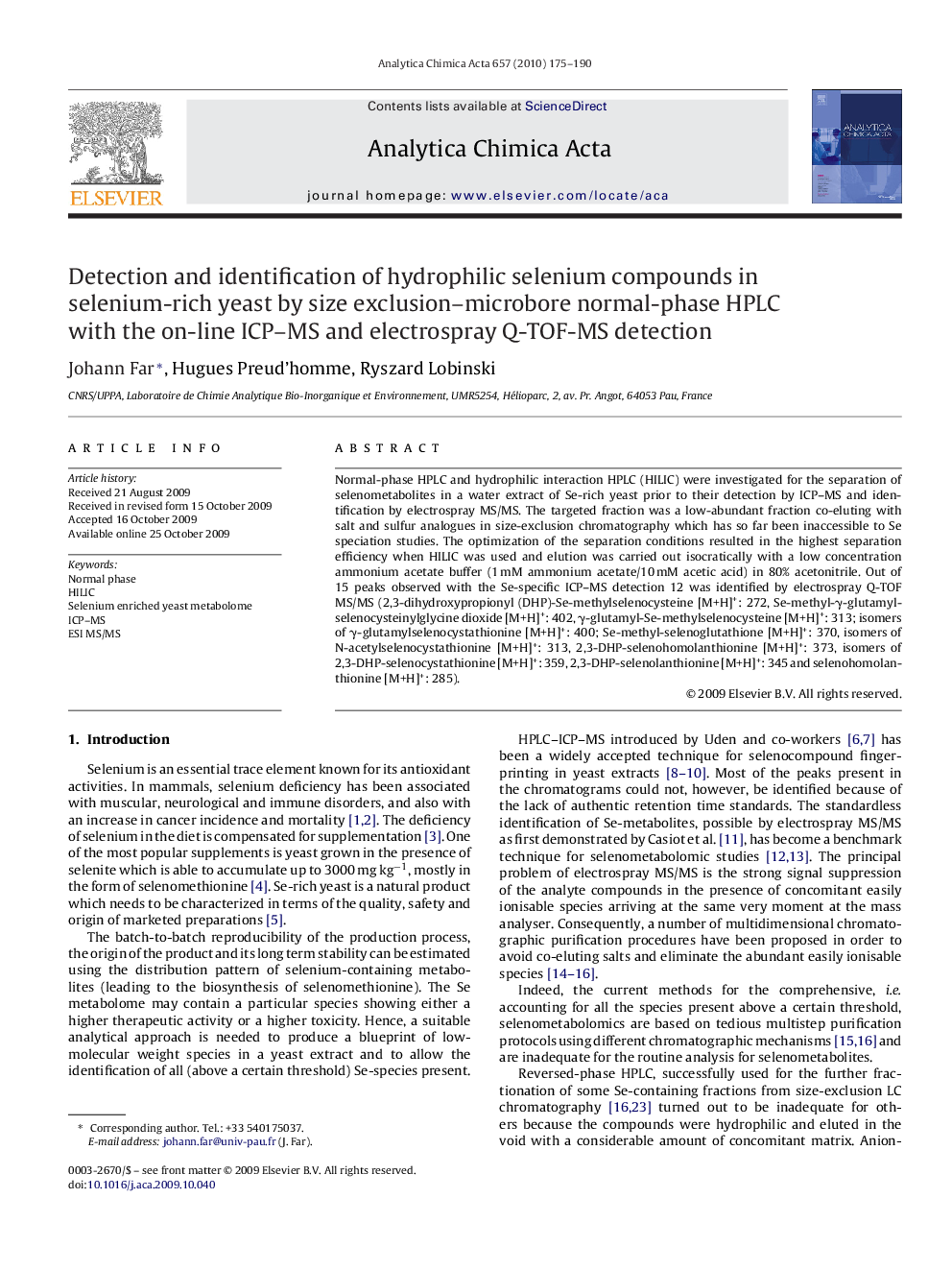| Article ID | Journal | Published Year | Pages | File Type |
|---|---|---|---|---|
| 1167738 | Analytica Chimica Acta | 2010 | 16 Pages |
Normal-phase HPLC and hydrophilic interaction HPLC (HILIC) were investigated for the separation of selenometabolites in a water extract of Se-rich yeast prior to their detection by ICP–MS and identification by electrospray MS/MS. The targeted fraction was a low-abundant fraction co-eluting with salt and sulfur analogues in size-exclusion chromatography which has so far been inaccessible to Se speciation studies. The optimization of the separation conditions resulted in the highest separation efficiency when HILIC was used and elution was carried out isocratically with a low concentration ammonium acetate buffer (1 mM ammonium acetate/10 mM acetic acid) in 80% acetonitrile. Out of 15 peaks observed with the Se-specific ICP–MS detection 12 was identified by electrospray Q-TOF MS/MS (2,3-dihydroxypropionyl (DHP)-Se-methylselenocysteine [M+H]+: 272, Se-methyl-γ-glutamyl-selenocysteinylglycine dioxide [M+H]+: 402, γ-glutamyl-Se-methylselenocysteine [M+H]+: 313; isomers of γ-glutamylselenocystathionine [M+H]+: 400; Se-methyl-selenoglutathione [M+H]+: 370, isomers of N-acetylselenocystathionine [M+H]+: 313, 2,3-DHP-selenohomolanthionine [M+H]+: 373, isomers of 2,3-DHP-selenocystathionine [M+H]+: 359, 2,3-DHP-selenolanthionine [M+H]+: 345 and selenohomolanthionine [M+H]+: 285).
